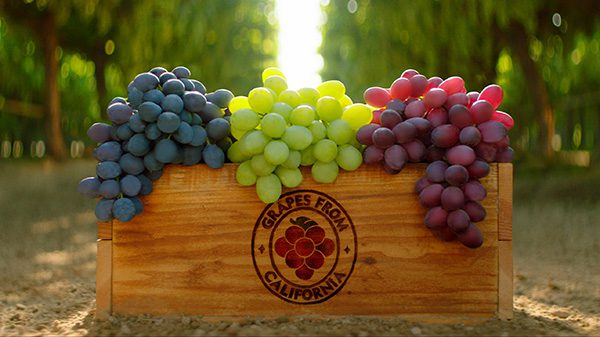
Date June 16, 2022 — The U.S. Department of Agriculture (USDA) is amending the California Grape Marketing Order to reduce membership of the California Desert Grape Administrative Committee from 12 to 10, allow six members to constitute a quorum, including, at a minimum, one producer member and one handler member, and require six concurring votes to pass any action of the committee.
The committee believes that having a smaller committee size in addition to modifying the quorum and voting requirements would ensure a more efficient and orderly flow of business.
The committee unanimously recommended this amendment and 100 percent of grape producers voting supported it in a referendum conducted Feb. 14 through March 4, 2022.
The final rule for this action was published in the Federal Register on June 16, 2022. The rule will be effective on July 16, 2022.
More information about the marketing order is available on the 925 California Desert Grapes webpage, the AMS Marketing Orders and Agreements webpage, or by contacting the Market Development Division at (202) 720-2491.
Authorized by the Agricultural Marketing Agreement Act of 1937, marketing orders are industry-driven programs that help fruit, vegetable and specialty crop producers and handlers achieve marketing success by leveraging their own funds to design and execute programs that they would not be able to do individually. AMS provides oversight to 27 fruit, vegetable and specialty crop marketing orders and agreements, which helps ensure fiscal accountability and program integrity.
AMS policy is that diversity of the boards, councils and committees it oversees should reflect the diversity of their industries in terms of the experience of members, methods of production and distribution, marketing strategies, and other distinguishing factors, including but not limited to individuals from historically underserved communities, that will bring different perspectives and ideas to the table. Throughout the full nomination process, the industry must conduct extensive outreach, paying particular attention to reaching underserved communities, and consider the diversity of the population served and the knowledge, skills, and abilities of the members to serve a diverse population.
Date June 16, 2022 — The U.S. Department of Agriculture (USDA) is amending the California Grape Marketing Order to reduce membership of the California Desert Grape Administrative Committee from 12 to 10, allow six members to constitute a quorum, including, at a minimum, one producer member and one handler member, and require six concurring votes to pass any action of the committee.
The committee believes that having a smaller committee size in addition to modifying the quorum and voting requirements would ensure a more efficient and orderly flow of business.
The committee unanimously recommended this amendment and 100 percent of grape producers voting supported it in a referendum conducted Feb. 14 through March 4, 2022.
The final rule for this action was published in the Federal Register on June 16, 2022. The rule will be effective on July 16, 2022.
More information about the marketing order is available on the 925 California Desert Grapes webpage, the AMS Marketing Orders and Agreements webpage, or by contacting the Market Development Division at (202) 720-2491.
Authorized by the Agricultural Marketing Agreement Act of 1937, marketing orders are industry-driven programs that help fruit, vegetable and specialty crop producers and handlers achieve marketing success by leveraging their own funds to design and execute programs that they would not be able to do individually. AMS provides oversight to 27 fruit, vegetable and specialty crop marketing orders and agreements, which helps ensure fiscal accountability and program integrity.
AMS policy is that diversity of the boards, councils and committees it oversees should reflect the diversity of their industries in terms of the experience of members, methods of production and distribution, marketing strategies, and other distinguishing factors, including but not limited to individuals from historically underserved communities, that will bring different perspectives and ideas to the table. Throughout the full nomination process, the industry must conduct extensive outreach, paying particular attention to reaching underserved communities, and consider the diversity of the population served and the knowledge, skills, and abilities of the members to serve a diverse population.



